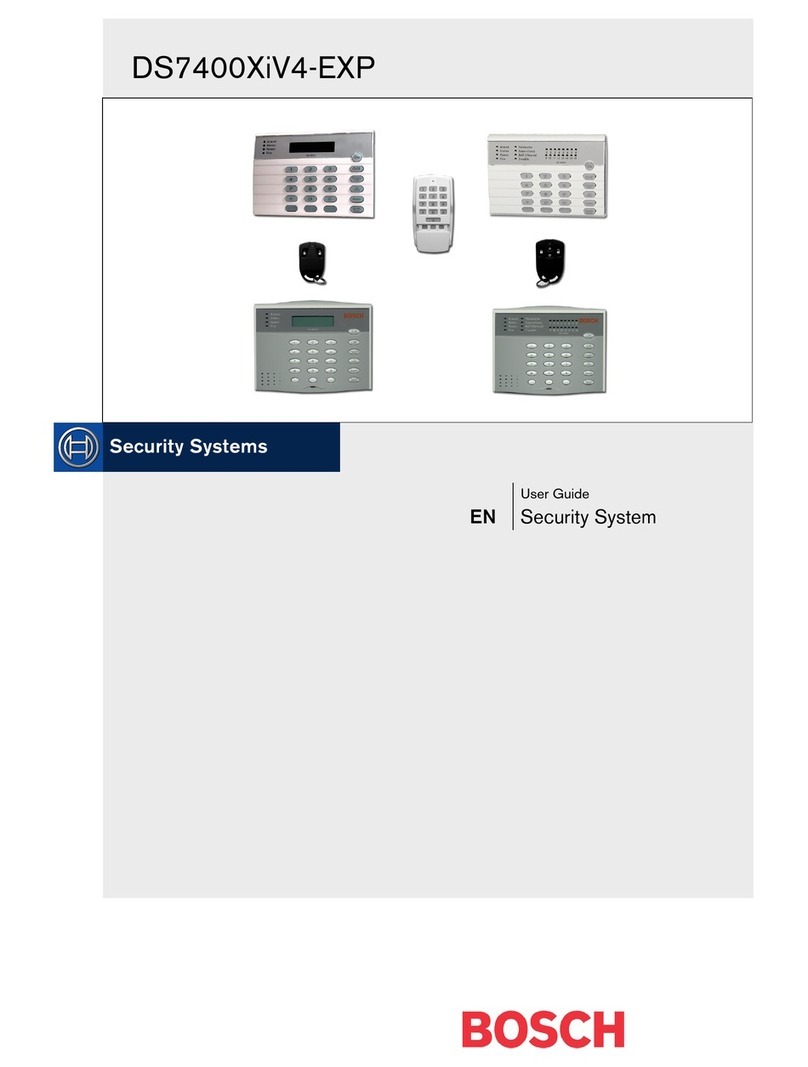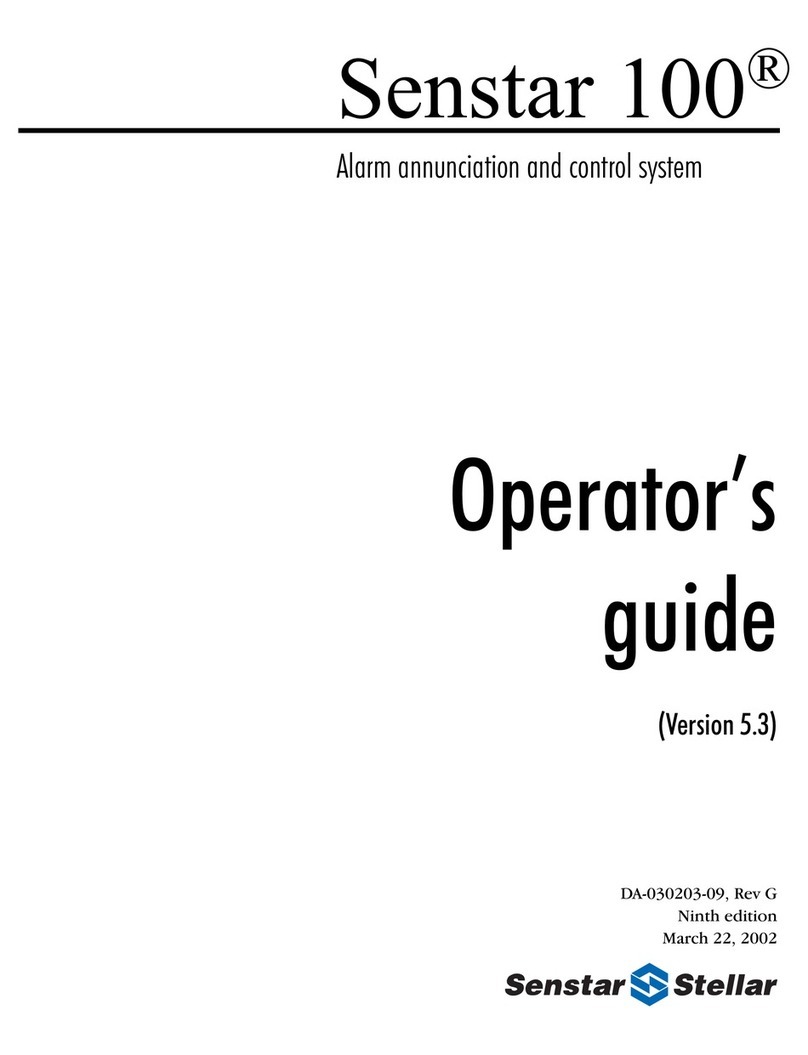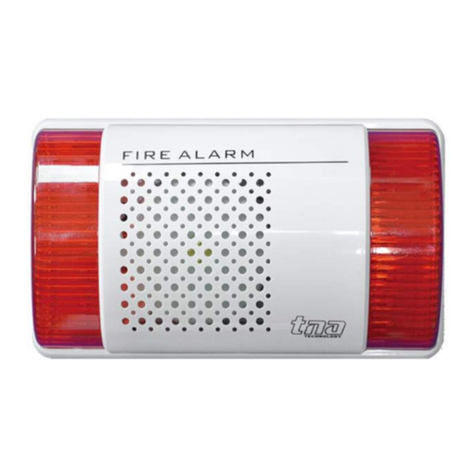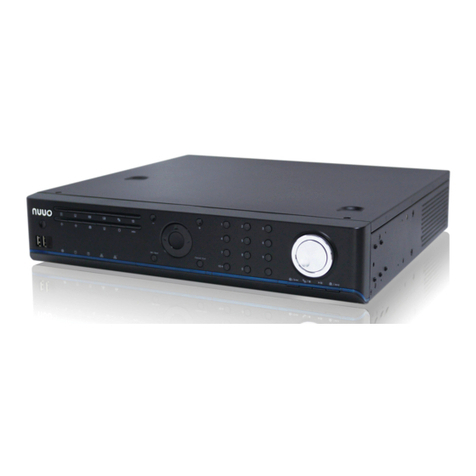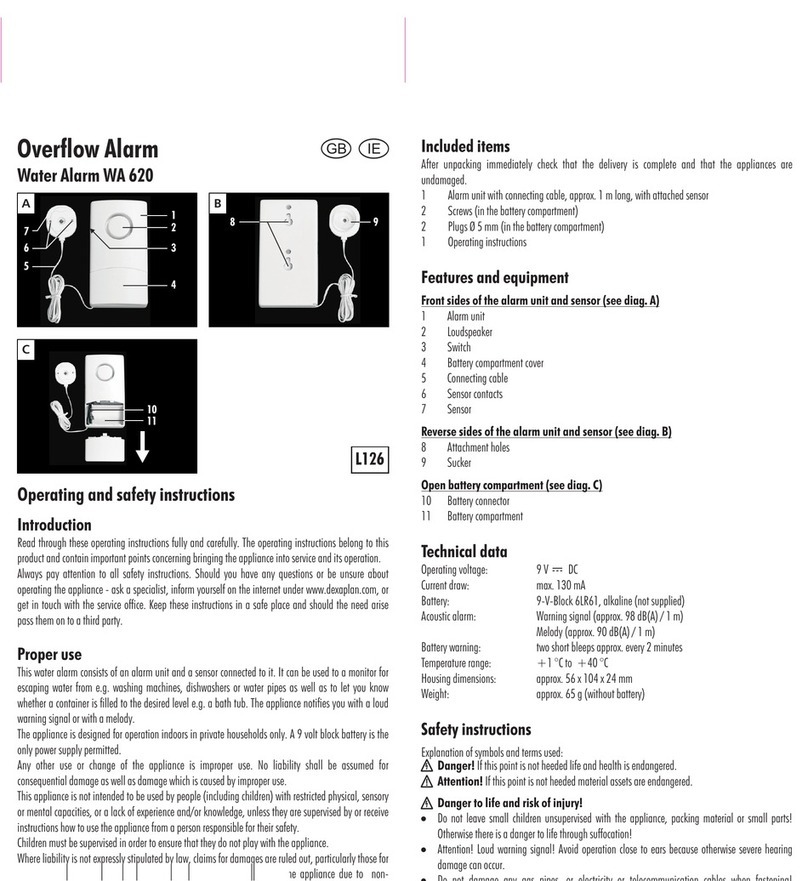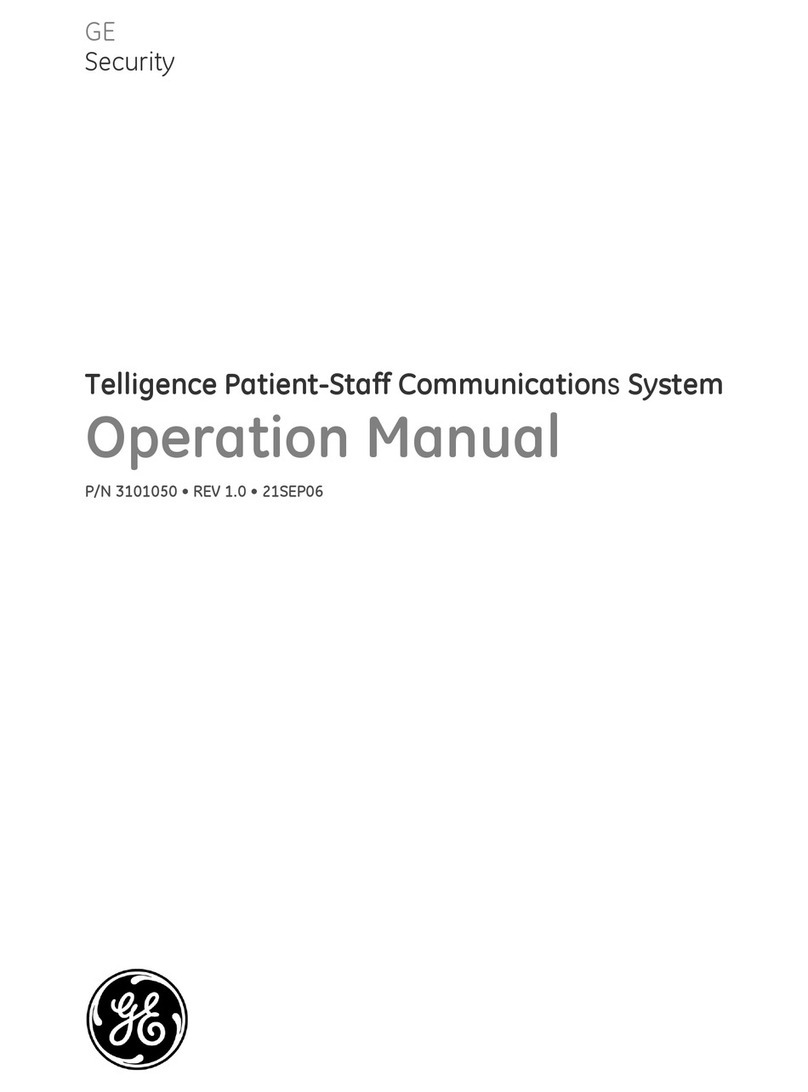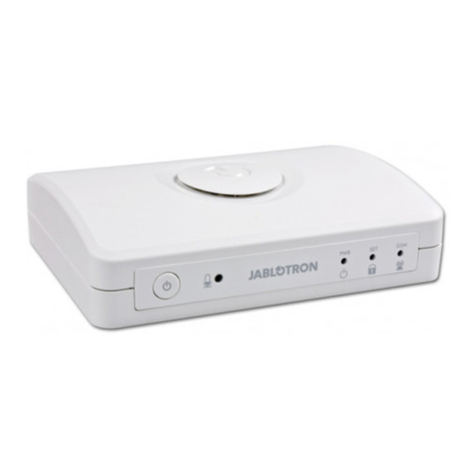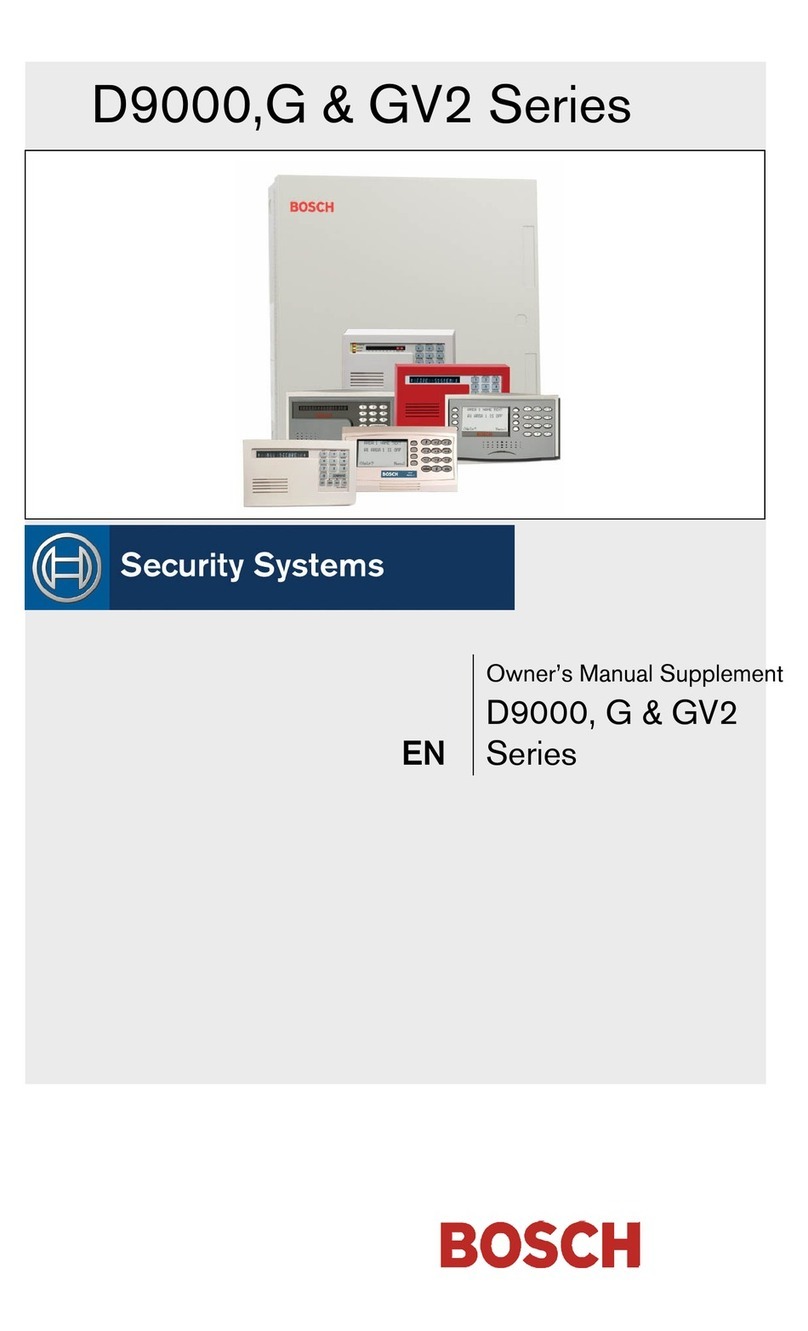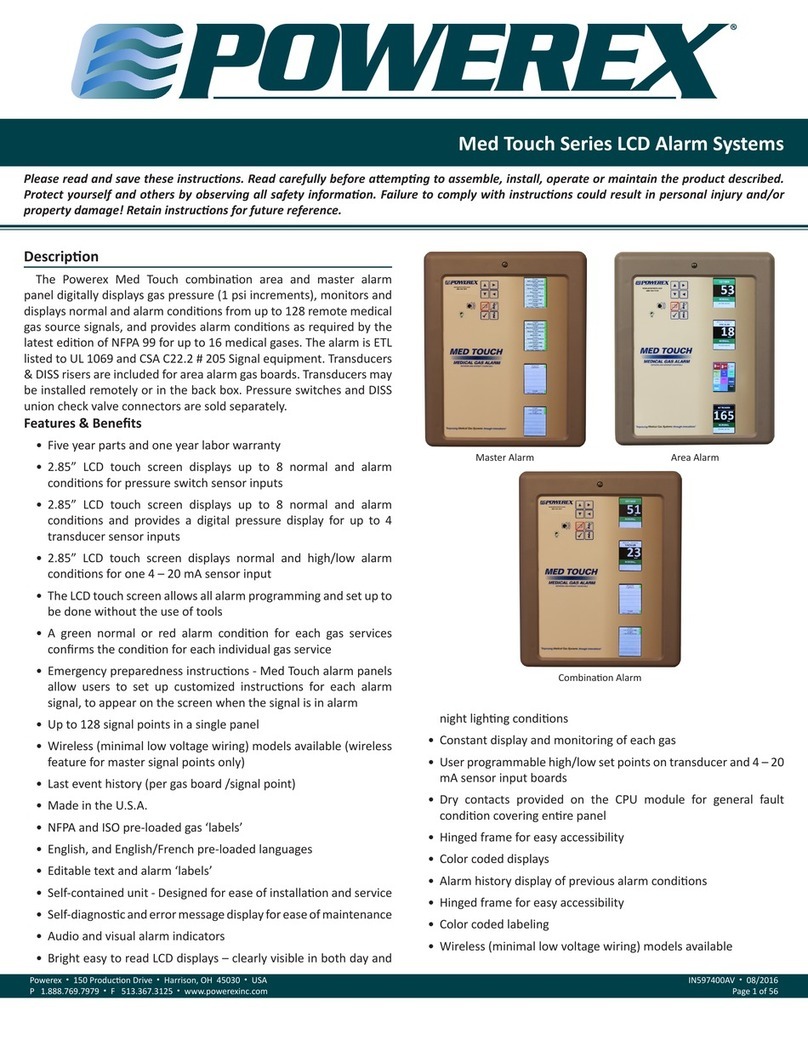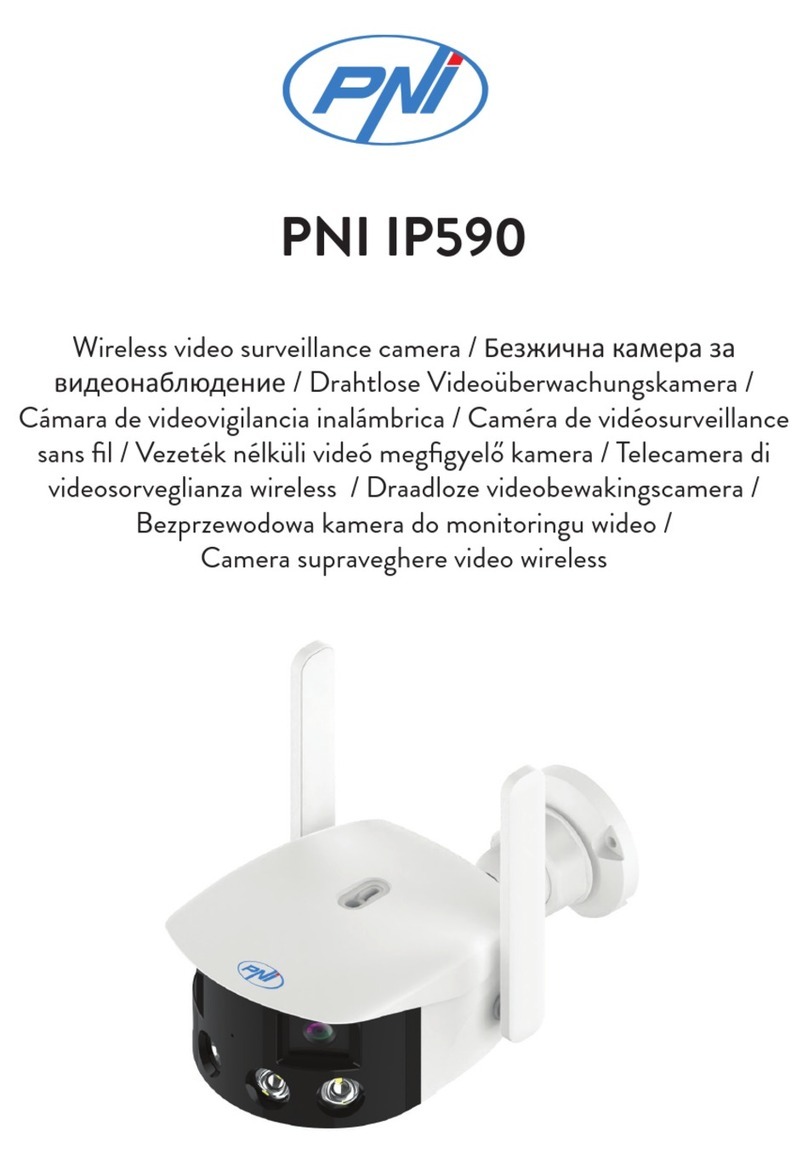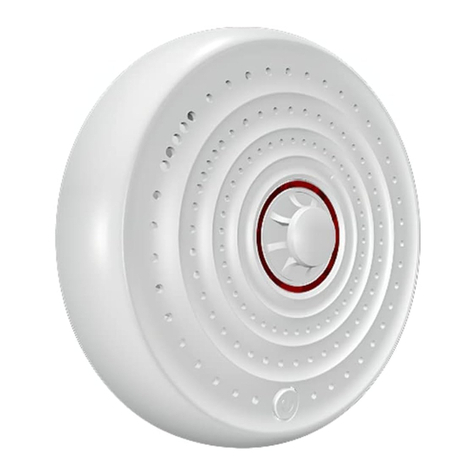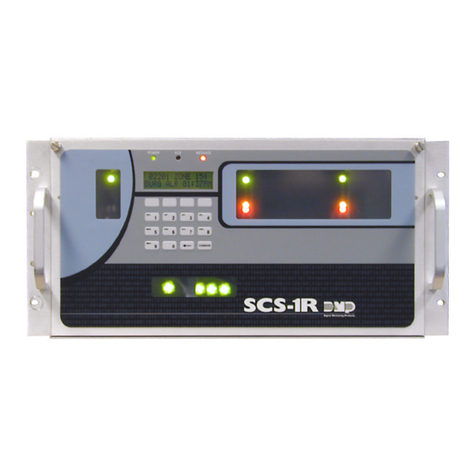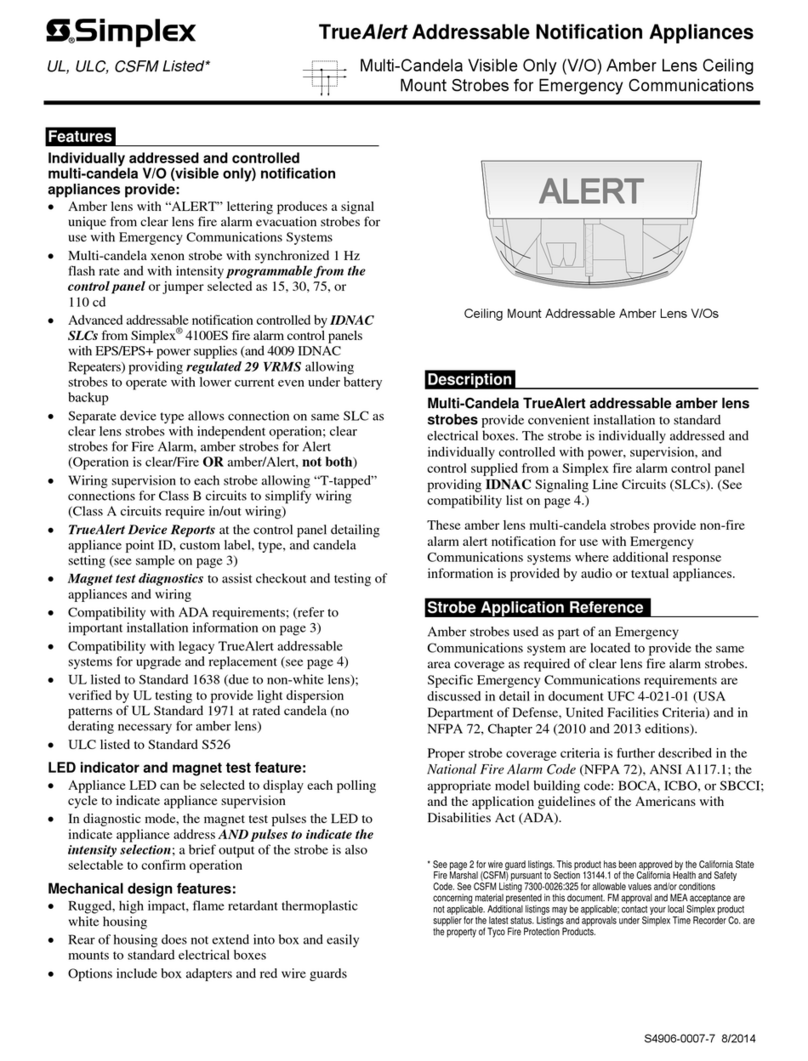Gaurdall Rascal Super Quick start guide

This manual is from
http://groups.msn.com/UKSecurityPanels
www.thesecurityinstaller.co.uk
Rascal Super
Engineer Manual
Contents
1. Introduction
2. System Planning
3. Mounting the Control Panel
4. Mounting Remote Keypads
5. Wiring Remote Keypads
6. Wiring Control Panel
7. Specification
8. Initial Power Up
9. Circuit Programming
10. Programming Examples
11. Programming Entry/Exit/Bell Times
12. Extended Programming
13. Engineer Logs
14. Factory Defaults

This manual is from
http://groups.msn.com/UKSecurityPanels
www.thesecurityinstaller.co.uk
1. Introduction
The Rascal Super is an electronic microprocessor controlled intruder alarm system. Its design
makes it simple to program and install. This allows the system to be tailored to the individual
users needs. Before attempting to program the system the engineer should be familiar with all
the features and options that are available .
2. System Planning
The Rascal Super is supplied with a factory set default configuration which allows the panel to
be used immediately without any additional configuration. Please check defaults for suitability.
The Rascal Super intruder alarm system consists of a main control panel and up to 3 remote
keypads. The main control panel should be out of sight but remain accessible for
programming or test. The engineer and end user should discuss and agree on the location of
any remote keypads fitted to the system. This should be agreed after full explanation of the
proposed entry/exit routes and any other system functions such as part guard, home guard,
chime or PA.
3. Mounting the Rascal Super Panel
(a) Remove the two cover screws and remove the cover
(b) Remove the three screws securing the PCB to the pillars (one screw is under the keypad
which also has to be removed)
(c) Place the control panel in the proposed mounting position and mark the 3 holes.
(d) Mount the control panel securely using the 3 mounting holes.
4. Mounting the Remote Keypads
(a) Having agreed the position(s) of any remote keypad(s) to be fitted. ( The keypads can be
either angled up or down by inverting the backbox.)
(b) Remove the two cover screws and remove the lid .
(c) Mark the holes for the mounting position, two diagonal fixings are normally adequate.
(d) Screw the back box in the agreed position.
(e) Note the rear entry for cabling.
5. Wiring the Remote Keypad
(a) The remote keypads require 6 core cable for their connection to the main control panel.
(b) Connect the cable as shown below.
(c) Individual keypads do not need to be identified to the system.

This manual is from
http://groups.msn.com/UKSecurityPanels
www.thesecurityinstaller.co.uk
6. Wiring the Control Panel
a) Mains Connection
The mains supply to the control panel is connected via a 3 way terminal block located in
the bottom centre of the control panel. Mains should be supplied to the control panel via
a fused spur.
b) Battery Connection
The Rascal Super requires a 1.9AH battery to be fitted to provide power in the event of a
mains failure.
c) Detector Circuits
Connections are provided for up to five detector circuits. These connectors are for closed
circuit detection devices. A common tamper loop is required for all detection devices.
The circuits are located on the bottom LHS of the control board.
d) Internal Sounders
A connection is provided to allow internal extension speakers to be fitted . Up to two
16Ω extension speakers may be fitted to the system.
Note : To reduce the volume of the speakers cut the resistor (option 1) shown on the PCB
drawing.
e) External Sounder & Strobe
Connections for the external sounder and strobe are shown below. Note bell trigger
shown is with output programmed for applied negative (negative bell trigger).
(i) ST-Strobe switched negative
(ii) S-Bell switched negative trigger
(iii) H-Siren hold off (open circuit in alarm)
(iv) + Bell hold off supply
f) AUX DC Detector Power
Auxiliary power is provided from the connections at the bottom RHS of the main PCB and
the Bell+. These provide power for detectors and other devices requiring external power.
The auxiliary power output is rated at 500mA and 12V (nominal).

This manual is from
http://groups.msn.com/UKSecurityPanels
www.thesecurityinstaller.co.uk
g) PIR Latch Line (L+)
A control line is provided for latching detector. This is a low (0V) when 'unset' and high
(12V) when 'set'. It is marked L+ on the main control board.
h) Detector Reset (ID)
A control line is provided for resetting devices which require the removal of power to reset
(e.g. smoke/viper detectors). Power to these devices should come from +12V Aux to
+12V of the device and ID to 0V (Negative) of the device. The ID line pulses off (open
circuit) at the start of the exit condition (half second pulse) and gives a 3 second pulse at
reset.
i) Remote Keyswitch
Two types of remote keyswitch can be connected to the Rascal Super system. One type
in the remote keypad and one type as a separate option connected to the main PCB.
j) Remote Keyswitch (in keypad)
The Rascal Super control panel can be operated from a remote keyswitch. The keyswitch
is mounted in the remote keypad. To install the keyswitch, power down the system (if
powered), remove the cover by the two screws and the clip holding the blanking in
position. When this is complete, remove the nut from the barrel of the keyswitch and fit
the keyswitch in the cover. Check that the arrow on the keyswitch faces upwards when in
the OFF position. Fit the cable onto the the PCB connector -black or green cable to the
bottom. Refit the cover.
k) Stand alone Keyswitch
This is wired to the PG, COMM and OFF connector on the main PCB. This keyswitch
will give off, full set and part set. Protection is provided by the panel going into full set if
the switch is open or the cable out.

This manual is from
http://groups.msn.com/UKSecurityPanels
www.thesecurityinstaller.co.uk
7. Specification
a) Power Supply
Mains Supply Voltage -240V AC Nom
PSU I/P Voltage -16V AC
PSU O/P Voltage -12V Nom
Current -750mA
AUX Current -500mA
Batt Fuse -1A (20mm)
b) Keypads
Supply Voltage -12V
Current Quiescent -20mA
Active -45mA
Maximum cable length 100 metres.
c) General
Operating Temperature --10°C to +50°C
Humidity -Up to 80% non condensing
Dimensions -213mm(W) x 176mm (H) x 93mm (D)
Weight Control Panel -1.25 (kg) excl. battery
Standby Battery -1.9AH 12V Rechargeable lead acid
8. Initial Power UP
Following completion of all the wiring to the main control unit and remote keypad(s) the
engineer can proceed with power up of the system. Switch on the mains and proceed as
follows.
NOTE : KEEP THE COVER OFF THE MAIN CONTROL PANEL
Enter 1234 this will stop the tamper. Press the "#' key to silence the intermittent tone.
TAMPER LED will flash. 'MAINS/DAY' LED's will both be'ON'. Enter 7890 (Engineer code).
The TAMPER and DAY LED's will extinguish and the
MAINS LED will flash. The panel is now
in program mode.
9. Circuit Programming
The Rascal Super is designed to be fully programmable. The engineer should be familiar with
all the programming options available to each circuit there are six circuit types with various
options assigned to each. These are listed below.
Function Options Available
Alarm Isolate in part set
Isolate in home set
Walk through (entry route)
Chime
Isolatable (user)
Full Set Entry Walk through (entry route)
Chime
Isolatable (user)
Part Set Entry Walk through (entry route)
Chime
Isolatable (user)
Note : All entry circuits are isolated in Home Set.
Full Set Entry acts as a normal alarm in Part Set.
Part Set Entry acts as a normal alarm in Full Set.
If you require entry in both Full and Part Set select both options.
24 Hr Bells/Strobe in 'DAY'
Hurry up tone and sounder
Fire Bells/Strobe in 'DAY'
PA No options available
Important Note : Any circuit can be programed from its factory default. In order to reprogram
the original configuration must be removed. This is done by entering circuit configuration i.e.
key 4 followed by key 1 for circuit 1 then the 0 key must be pressed to erase the configuration.
If the * key is pressed before a new configuration is entered the original configuration will be
reinstalled.
To program circuits the following keys must be pressed.
Key 4 followed by 1 Circuit one options
Key 4 followed by 2 Circuit two options
Key 4 followed by 3 Circuit three options
Key 4 followed by 4 Circuit four options
Key 4 followed by 5 Circuit five options

This manual is from
http://groups.msn.com/UKSecurityPanels
www.thesecurityinstaller.co.uk
10. Programming Examples
To make circuit 1 an alarm circuit and isolate permit, proceed as follows:
Press key 4 followed by key 1. Whilst in program mode clear all previous configurations.
Press key 1 followed by key 6 (LED's 1 and tamper are on). Press *key to exit.
To make circuit 2 an alarm circuit with walk through (entry route) and isolate permit, proceed
as follows:
Press key 4 followed by key 2. Clear previous configuration. Press key 1 followed by key 4,
then key 6 (LED's 1, 4 and tamper will be on). Press * key to exit.
To make circuit 3 a final exit point (door) with chime proceed as follows.
Press key 4 then key 3. Clear previous configuration. Press key 2 followed by key 5 (LED's 2
and 5 are on). Press * key to exit.
To make circuit 4 a part set isolated circuit with walk through (entry route) in full set and
isolate permit, proceed as follows.
Press 4 key followed by the 4 key. Clear previous configuration. Press the 1 key followed by
the 3 key, 4 key and 6 key (LED's 1, 3, 4 and 6 will be on).Press * to exit.
To make circuit 5 a 24 hr or Fire or PA circuit proceed as follows.
Press 4 key followed by the 5 key. Clear previous configuration. Press the 4 key for 24 hour
or press the 5 key for fire or press the 6 key for PA. LED 4 will be ON for 24 hour or LED 5
will be ON for fire or tamper LED for PAwill be ON. Press the * key to exit.
Engineer Access Code
The engineer access code on all new systems is 7 8 9 0. In order to change the engineer
code proceed as follows.
Enter program mode, 7 8 9 0. Create case tamper. Press 1 key, followed by 1 key. LED's 2,
3, 5 and tamper are on. Enter new 4 digit code. With each key pressed an LED will
extinguish. If new code is accepted an accept tone will be generated.
Note : If there is no accept tone the old code will still be valid.
11. Exit Time
The engineer must set the exit time as follows.
From the program mode press the '3' key followed by the '0' key. The time is programmable
from 5 -105 seconds. Add the displayed number and multiply by 5 e.g. to set for 60 seconds,
press the 6 key followed by the 4 key then the 2 key (LED's 2, 4, and tamper on). Time set is
6 + 4 + 2 = 12 multiplied by 5 = 60 seconds. Press the * key to exit.
Entry Time
The engineer must set the entry time as follows.
From program mode press the '3' key followed by the '1' key. The time is programmable from
5 -105 seconds. Add the displayed number and multiply by 5 e.g. to set for 40 seconds,
press the '5' key followed by the '3' key (LED's 3 and 5 on). Time set is 3 + 5 = 8 multipliedby
5 = 40 seconds. Press the * key to exit.
Bell Duration
The engineer must set the bell duration as follows. From mode press the '3' key followed by
the '2' key. Bell duration can be programmed for 1-21 minutes. Each key represents the
number of minutes programed. e.g. To set for 15 minutes duration press the 6 key followed by
the 5 key then the 4 key. Time is 6 + 5 + 4 = 15 minutes. Press the * key to exit.

This manual is from
http://groups.msn.com/UKSecurityPanels
www.thesecurityinstaller.co.uk
Part Set Exit Time
If programmed for part set the part set exit time must be programmed as follows.
From program mode press the '3'key followed by the '3' key. The time is programable from
5 -105 seconds. Add the displayed number and multiply by 5 e.g. to set for 15 seconds press
the '3' key (LED 3 will be on). Time set is 3 multiplied by 5 = 15 seconds. Press the * key to
exit.
12. Extended Programming
Extended programming functions are in groups. These are accessed by entering 70, 71, 72,
73, 74 and 79. There are various features available within these groups. These features
either enable or disable functions. If a function is enabled the LED for that function will be ON.
If it is disabled the LED will be OFF.
To program these features proceed as follows.
Group Press key '7' followed by '0' key
1 Press Key Feature LED on for Feature
1 Part Set Disable No Part Set
2 Bell Disable No Bells in Part Set
4 Instant Set Instant Set in Part Set
* To Exit
i.e. To change from instant set from program mode, press key '7' followed by '0' key. Then
press 4 key to enable instant set (LED 4 will be on if instant set selected). Press the * key to
exit.
Group Press key '7' followed by '1' key
2 Press Key Feature LED on for Feature
1 Home Set Disable No Home Set
2 Bell Disable No Bell in Home Set
4 Instant Set Instant Set in Home Set
* To Exit
i.e. To program for bell disable from program mode, press key '7' followed by '1' key. Then
press '2' key to enable the no bell inhome set featue (LED 2 will be on if no bells in home set
is selected). Press the * key to exit.
Group Press key '7' followed by '2' key
3 Press Key Feature LED on for Feature
1 Engineer Alarm reset Engineer only alarm reset
2 Engineer PA reset Engineer only PA reset
* To Exit
Group Press key '7' followed by '3' key
4 Press Key Feature LED on for Feature
1 Convert switch inputs Push Button Setting
* To Exit
Group Press key '7' followed by '4' key
5 Press Key Feature LED on for Feature
1 Flash circuit LED in Quick flash LED if circuit open
'DAY'
3 10 minute auto isolate Isolate circuits open for 10 mins
4 Blockschloss function Special setting method(Germany)
* To Exit
Bell Delay
The engineer can select bell delay as follows.
From program mode press the '7' followed by the '9'. The time is programable from 1-21
minutes. Each key represents a time in minutes e.g. to set for 20 minutes press the 6 key
followed by the '5', '4', '3' and '2' keys. Time is 6 + 5 + 4 + 3 + 2 = 20 minutes.
Press the * key to exit.
Note : If selected this feature will prevent the bells or sounders from operating for the selected
time.

This manual is from
http://groups.msn.com/UKSecurityPanels
www.thesecurityinstaller.co.uk
13. Engineer Log Review
The engineer log is organised into SET and UNSET events. The log will show the first to
alarm and subsequent alarms as well as isolated circuits. First to alarm is shown by the
relevant LED being 'ON'. Subsequent alarms are shownby the relevent LED(s) flashing and
isolated circuits are shown by the relevent LED(s) pulsing slowly. The buzzer will sound whilst
reviewing the 'SET' logs and the 'DAY' LED will be 'ON' whilst reviewing the 'UNSET' logs.
To view the engineer logs proceed as follows.
From the program mode press the '5' key. The log routine will start with DAY 1 SET. The
remaining logs are viewed by pressing the relevent key '2' for 2nd, '3' for 3rd etc. on to log 9.
Pressing the '0' key gives the last to alarm condition.To exit logs press the * key.
The # key will alternate between 'SET' and 'UNSET' logs and can be used at anytime.
Exiting Engineer Mode
When all programming and testing is complete make sure the sounders, detectors and battery
are connected. Once complete the system is ready to hand over to the user. To exit engineer
(program mode) press the # key from the program mode and the system is ready. The 'mains'
LED and DAY LED will now be 'ON'.
14. Factory Defaults
The control panel can be reprogrammed with the factory defaults. To reload defaults proceed
as follows.
Power down and remove battery. Fit a link to CN6 on the control board. Repower the system.
The link can now be removed. If the reloading is successful when the system powers up there
will be a two tone buzz and this signifies correct loading of defaults.
Factory Defaults
User Code 1234
Engineer Code 7890
Circuit 1 Personal Attack (PA)
Circuit 2 Alarm Circuit
Circuit 3 Alarm Circuit, Isolate in Part Set
Circuit 4 Part Set Entry, Walk Through
Circuit 5 Full Set Entry, Part Set Entry
Full Set Exit Time 30 Seconds
Part Set Exit Time 15 Seconds
Entry Time 30 Seconds
Bell Ring Time 15 Minutes
This manual is from
http://groups.msn.com/UKSecurityPanels
www.thesecurityinstaller.co.uk
Other manuals for Rascal Super
1
Table of contents

